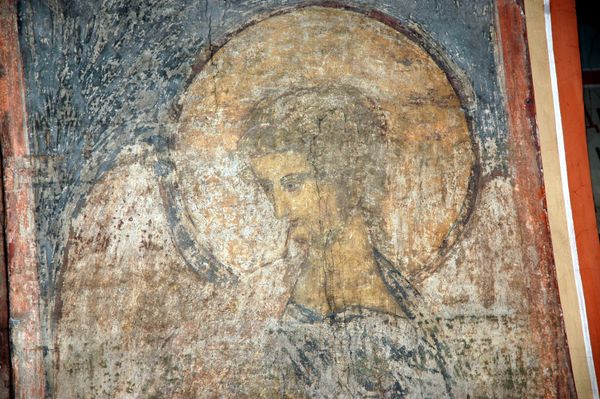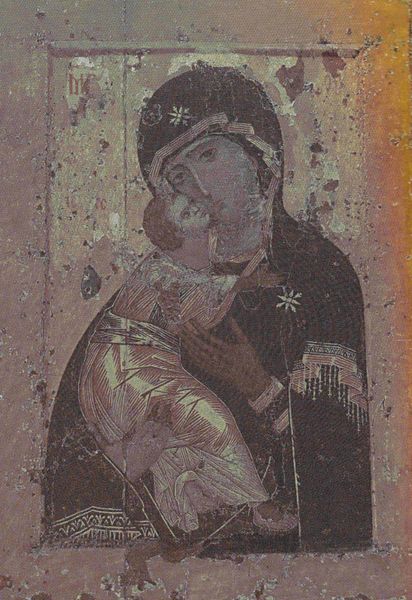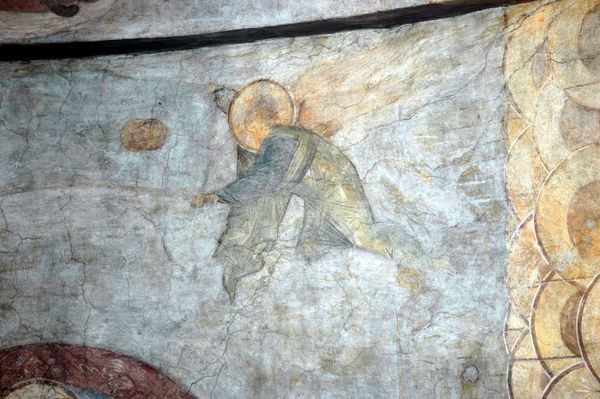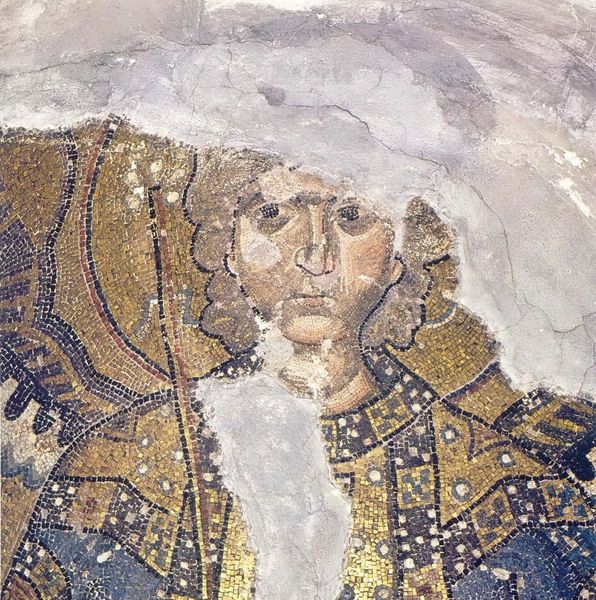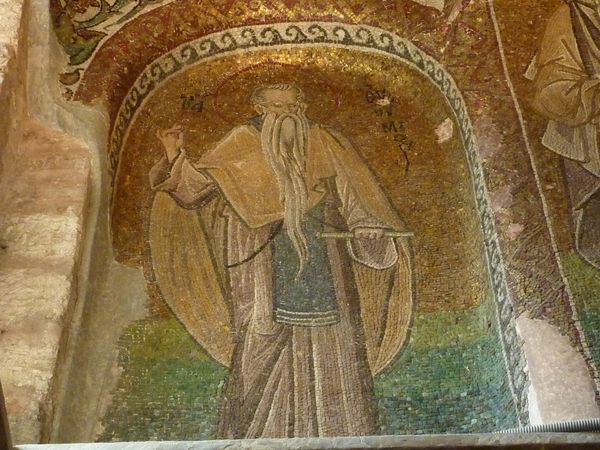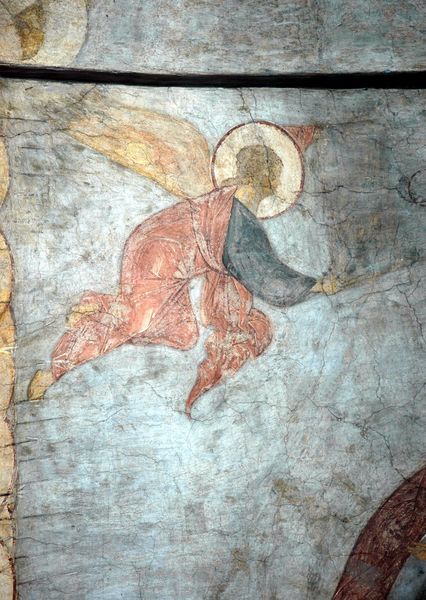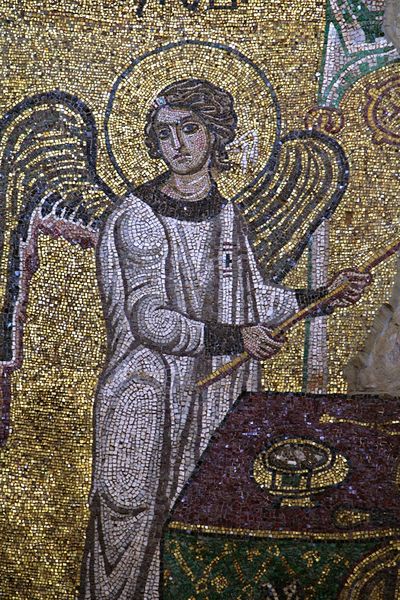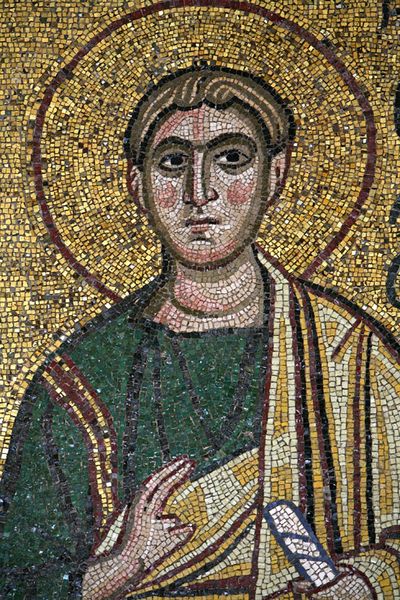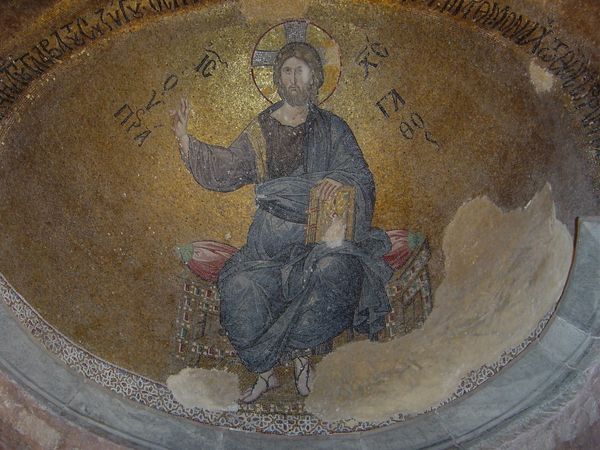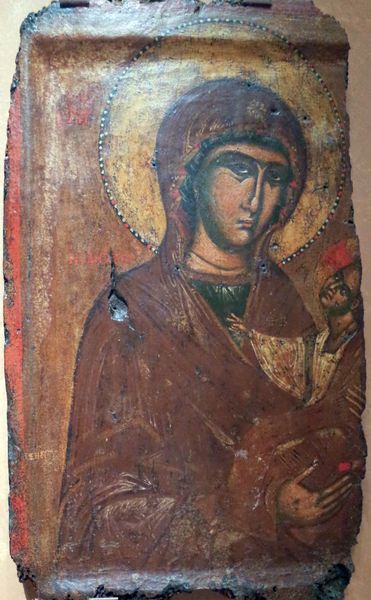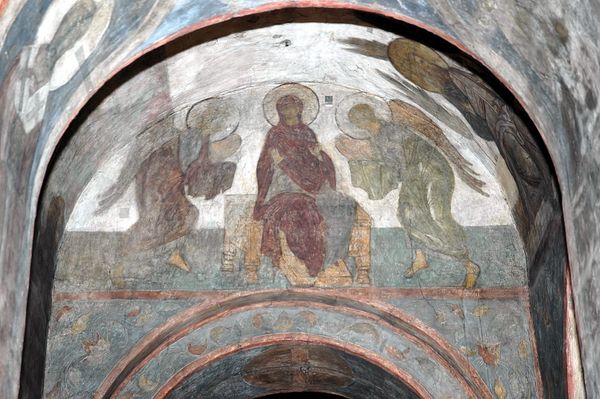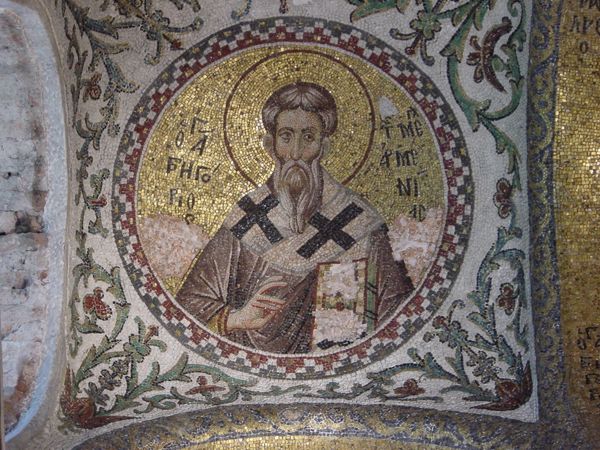
mosaic
#
portrait
#
mosaic
#
byzantine-art
#
figuration
Copyright: Public domain
Curator: Welcome. Here we have a fragment of the "Virgin Mary on Deesis Mosaic," created around 1261. It’s a work of Byzantine art found here in Hagia Sophia. Editor: Wow. Despite the damage, there’s this incredible stillness. That downturned gaze just pierces you, doesn’t it? So human, almost sorrowful. Curator: Indeed. The damaged portions actually amplify its effect; the visible tesserae draw attention to the materiality, making us aware of its construction, the deliberate placement of each piece to build up form and feeling. Editor: Like little tears, those missing bits. And the gold leaf halo… it shimmers even now. Talk about capturing the divine in something earthly! How would you describe the composition formally? Curator: Note how her head inclines towards Christ—that isn't present in our segment. The perspective, the flattening of planes typical of Byzantine art, elevates her to an icon, more than merely a portrait. Also, consider the subtle gradation of color within her face—pale pinks and creams against darker shadows. Editor: It's less a likeness, more an invocation. The colours, faded as they are, still possess such a raw elegance, they glow. I wonder what it was like when freshly laid? I find myself contemplating themes of fragility and timelessness here. Curator: Precisely. It prompts consideration about the ephemeral nature of earthly beauty against the backdrop of a theological cosmos. And the hieratic scale… while this is only a portion, the implied scale suggests a grand representation. Editor: Definitely grand. There’s something so arresting about capturing a moment, however solemn, and freezing it like this, in tile. It invites quiet introspection. A beautiful work. Curator: It prompts a sense of reverence that resonates beyond the purely aesthetic, particularly knowing where this segment existed originally within the Deesis. Editor: For me, it's all about the intimacy conjured up amid such history. You gaze upon it and immediately ponder its making, its history, and our mortality, don’t you think?
Comments
No comments
Be the first to comment and join the conversation on the ultimate creative platform.
